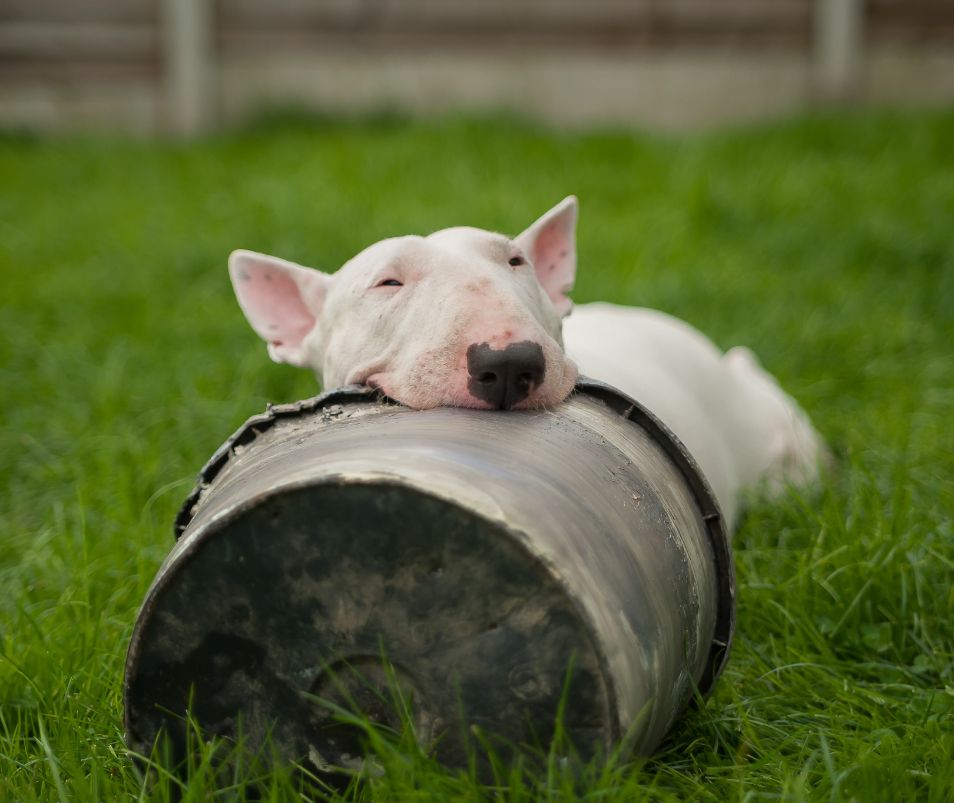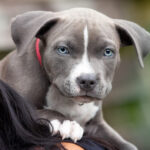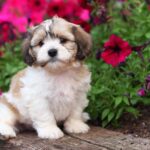Are you thinking about getting a bull terrier puppy? Here is a comprehensive guide to bull terrier puppies that covers all of their traits, behaviors, life expectancy, and other details. After reading this post, we hope you will learn how to take care of them.
Bull terriers make devoted, boisterous, and lovable companions. The attention-grabbing appearance of this exuberant breed, which can also be a little mischievous, is unquestionably notable.
The Bull Terrier was initially bred as a fighting dog in the 19th century and later became a fashionable gentleman’s companion. Today, however, they are more commonly used as family pets and show dogs. They are a canine breed distinguished by their lengthy, egg-shaped heads.
Learn more about bull terrier puppies by reading this article.
Appearance and Size
A face unlike any other belongs to the bull terrier. Their heads are long and egg-shaped, with a Roman nose that slopes down into a pointed ear on top. Additionally, they are the only registered breed with triangle-shaped eyes.
Bull terriers come in a wide range of sizes. Males with more muscle can bulk up to be 75-pound bullies, while some can be on the smaller side at just 35 pounds. There are also miniature bull terriers, which weigh less than 30 pounds and were recognized as a distinct breed in the 1990s.
The big-boned dogs’ gait displays their power and dexterity. Short, flat hairs that appear shiny and are hard to the touch make up their coats. Bull terriers come in more than 20 different color and marking combinations, but they can also be white—even solid white.
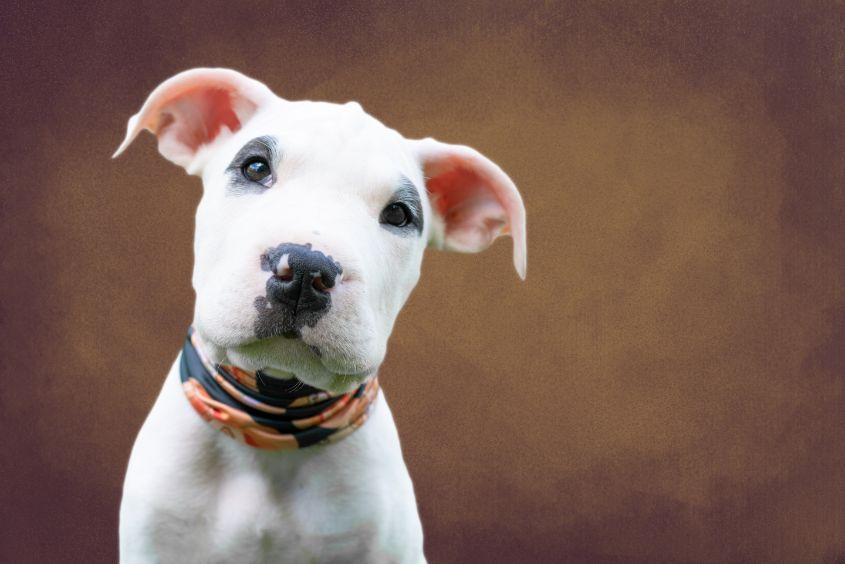
Personality
The Bull Terrier is a gregarious, feisty extrovert who is always up for a good time and happy to see you. He never backs down from anyone or anything. It is unheard of for a Bull Terrier to shy away from people.
Bull Terriers and Mini Bull Terriers are characterized as brave and fiery. These are positive characteristics, but they can turn negative if the Bull Terrier is allowed to develop possessive or jealous behavior. Without early training and socialization—including contact with dogs and other animals—they may develop aggressive tendencies toward other animals.
They are sweet-natured around people, though. On the negative side, they can be chewers, barkers, and tail chasers, and are frequently challenging to housebreak.
Nutrition
The Bull Terrier should thrive on premium dog food, whether it is produced commercially or made at home under the guidance and approval of your veterinarian. No matter what stage of life the dog is in—a puppy, adult, or senior—its diet should be suitable. Particularly when they are young, Bull Terriers require a healthy diet rich in natural calcium.
The dogs receive a small amount of yogurt or whole milk from one knowledgeable breeder in the morning and just before bed. When they are going through periods of rapid growth and bone development, she also advises supplementing their diet with some naturally high-calcium foods like broccoli.
It’s important to keep an eye on your dog’s weight and calorie intake because some breeds are prone to obesity. However, giving too many treats can lead to obesity. Treats can be a valuable training aid.
Find out which foods from humans are safe for dogs and which are not. If you have any questions regarding your dog’s diet or weight, speak with your veterinarian. Fresh, clean water must always be accessible.
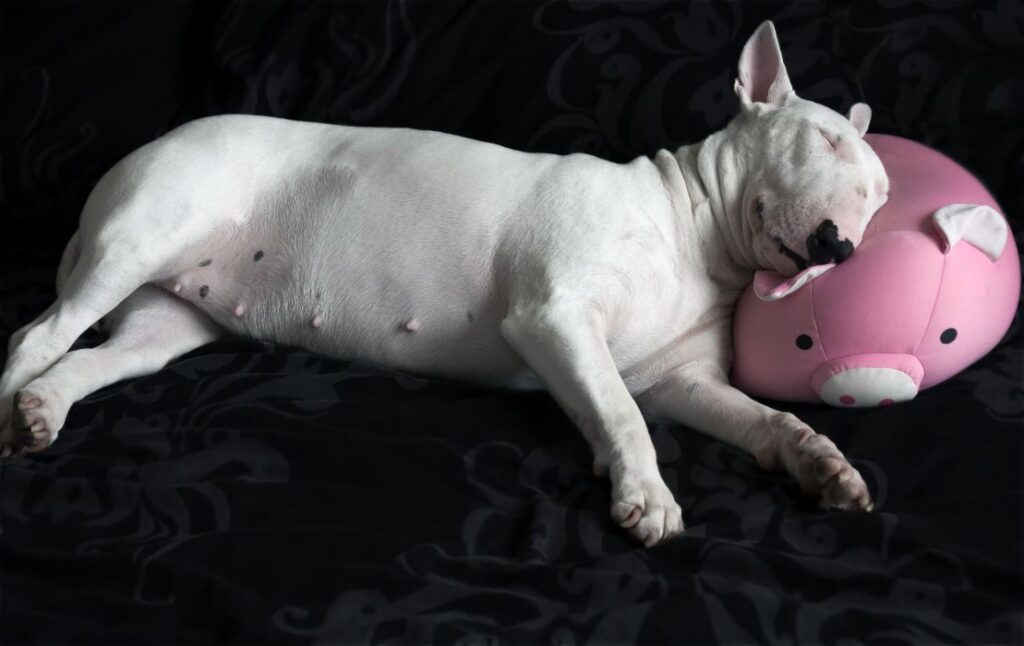
Training
Owners should keep in mind that although the breed possesses the tenacity and bravery of the Bulldog, it also belongs to the Terrier Group. This person is independent and a free thinker who values “fun and games” more than a strong work ethic.
Bull Terriers follow the maxim that they will do anything that is enjoyable. Make learning enjoyable and they will perform well. A great place to start is with positive reinforcement using treats or toys.
Bull Terriers are excellent in many dog sports, such as agility, flyball, freestyle, weight pulling, and carting, as well as jobs like bomb detection, search and rescue, and working as service, assistance, health-alert, and therapy dogs. If trained in a positive way with persistence and humor, Bull Terriers are capable of anything.
Exercise
Daily, moderate exercise that stimulates the body and mind, such as leisurely, long walks with the family, is beneficial to bull terriers. The breed was created to be a gentleman’s companion and for sport, and it is extremely strong and agile.
It’s fun to use canine sports like obedience, tracking, agility, and ability tests to channel the BT’s energy.
Feeding
High-quality dog food should be given in the recommended daily range of 1 5/8 to 4 1/4 cups, divided into two meals.
Your adult dog’s caloric needs are influenced by his size, age, body type, metabolism, and level of activity. Just like people, dogs are unique individuals who require different amounts of food. It almost goes without saying that an active dog will require more than one who prefers to lounge around.
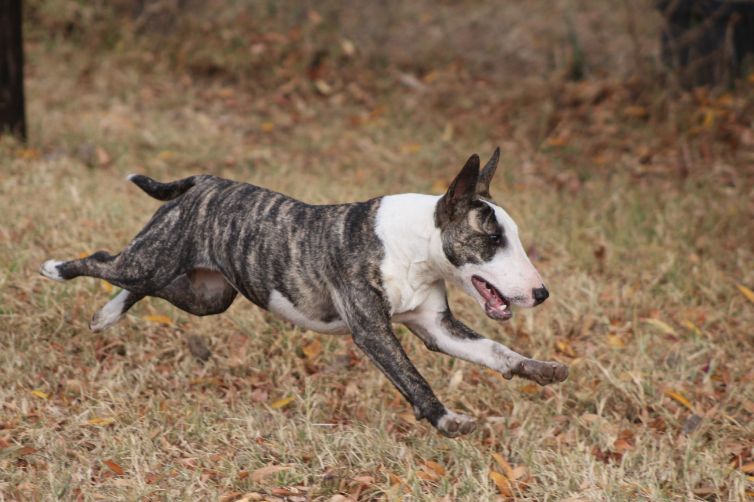
A significant factor is the quality of the dog food you purchase; the better the food, the more effectively it will nourish your dog, and the less you will need to shake into the bowl.
Instead of leaving food out all the time, make sure your Bull Terrier gets two meals a day and is properly nourished. Give him the hands-on and eye tests if you’re not sure if he’s overweight.
Look down at him first. There ought to be a waist visible. Then, lay your hands on his back with your thumbs along his spine and your fingers spread outward. Without exerting much pressure, you should be able to feel his ribs but not see them. If you can’t, he should eat less and exercise more.
Coat Color and Grooming
The Bull Terrier has a short, flat, shiny, and hard-textured coat. White and colored Bull Terriers are the two color variations available. The head, which may or may not has colored markings, but not the rest of the body, is the only place where White Bull Terriers have coloration. Bull Terriers with colored coats can be any color without white or any color with white markings.
Bull Terriers require only a weekly brushing with a rubber mitt or curry brush for proper grooming. The only exception is when they shed twice a year when daily brushing is required to keep all the hair under control. Bull Terriers don’t require frequent bathing and can be dusted with a damp cloth or washed with dry shampoo unless they’ve rolled in something smelly.
Other grooming requirements include nail care and dental hygiene. Brushing your Bull Terrier’s teeth at least twice or three times a week will help to get rid of tartar buildup and the associated bacteria. He should have his nails trimmed every day, or at least once or twice a month, as needed. The nails are too long if you can hear them clicking on the floor.
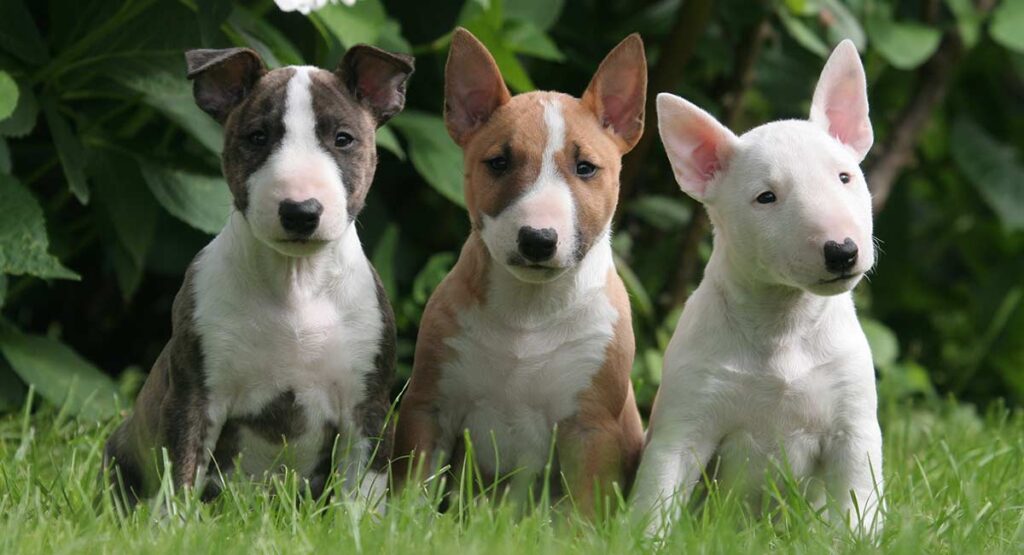
Short nails prevent the tearing of the carpet and keep the feet in good condition. When you are nail-clipping is the ideal time to trim the feet if they need to be cleaned up.
Make sure there is no debris, inflammation, or redness in the ears by checking them once a week. Whenever necessary, wipe them down with a cotton ball and a cleanser that has been approved by the breeder or vet of your dog. Avoid inserting the cotton ball deeper than your first fingernail as you wipe the ear canal’s outer edge.
When your Bull Terrier is a puppy, start getting him used to being brushed and examined. Look inside his mouth and ears while handling his paws frequently because dogs are sensitive about their feet.
Make grooming a pleasurable activity that is accompanied by praise and rewards, and you’ll lay the groundwork for simple veterinary examinations and another handling when he’s an adult.
Care
The bull terrier only needs minimal grooming because of its short, glossy coat. Dirt and loose hair can be removed by giving your hair a once-weekly brushing with a soft-bristle brush. Those distinctive ears do require routine inspection and cleaning as necessary.
In order to prevent discomfort when walking, bull terrier nails should be kept short. They can be cleaned with either dry shampoo or a damp cloth and don’t require frequent bathing unless they get into a stinky mess.
Be aware that while their cute sweater or coat looks adorable when it’s a little chilly outside, it won’t keep them warm when it’s colder outside.
Warmer weather will make them more comfortable but never leave them outside unattended for long periods of time. Like all dogs, bull terriers need plenty of water, shady places, and air conditioning to stay cool because they don’t perspire as people do. However, you can omit the ice cubes!
History of a Bull Terrier Puppy
During the nineteenth century, bull terriers were developed in England. The Bull Terrier was created around 1835 as a result of a cross between the bulldog and the old English terrier. Later crossbreeds to the Spanish Pointer and, even later, the white English terrier and Dalmatian resulted in a fashionable, hardy, white dog.
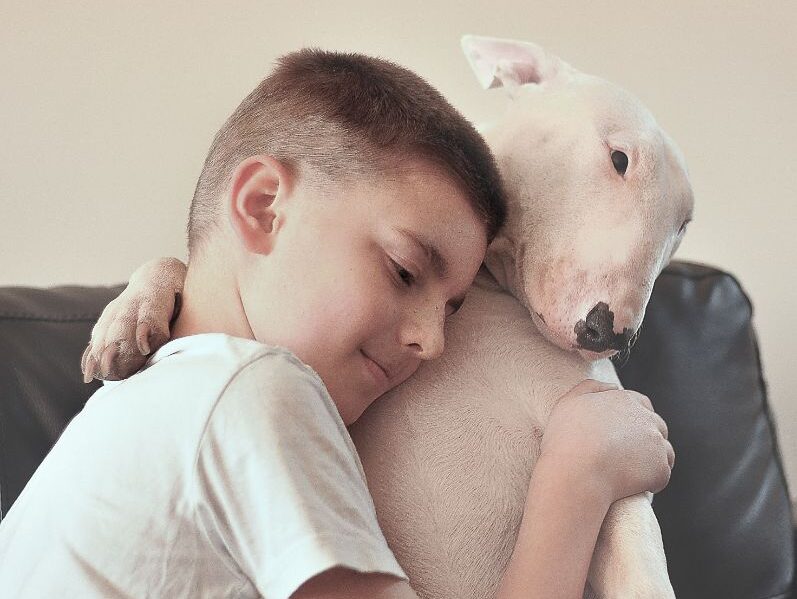
In the mid-1800s, the white version of the breed, known as “white cavaliers,” became a favorite pet among the gentry. Around 1900, colors were reinstated in crosses to the Staffordshire Bull Terrier.
Bull Terriers of today are still powerful, fearless dogs, but they are gentler than they were in the past. Although they make good family pets, they are not suitable for many households.
Be Caution When Bull Terrier Puppies Are Staying With Children and Other Pets
Due to their energy and propensity for rough play, Bull Terriers and Miniature Bull Terriers should not be kept in a household with young children. Active older children who are familiar with how to interact with dogs, they make fantastic playmates with endless energy.
However, Bull Terriers can be hostile toward children they don’t know, particularly if there is a lot of shouting or fighting going on. They may feel it’s their duty to protect “their” children from their friends. Always keep an eye on children playing; never leave a dog alone with a child, as you would with any dog; and show kids how to get close to and pet dogs.
They are very tolerant of the kids in their own families, but they don’t like being teased. Keep your kids from pulling on the dog in a tug-of-war.
Bull Terriers, especially males who haven’t been neutered, can be aggressive toward canines of the same sex, but they usually get along with other dogs of the same sex. Cats and other small furry animals shouldn’t be left in the care of bull terriers.

